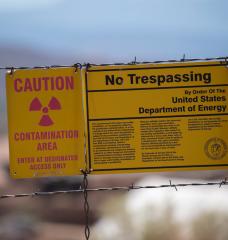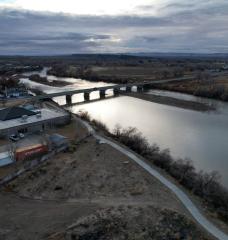
As prospects for emission reductions consistent with the temperature goals of the Paris Agreement look increasingly doubtful, attention is shifting from emissions reduction technologies to emission removal technologies. Such negative emissions technologies (NETs) include storage of carbon in coastal ecosystems, terrestrial carbon removal and sequestration, bioenergy with carbon capture and sequestration (BECCS), direct air capture, carbon mineralization of CO2, and sequestration of CO2 in sedimentary geological formations.
If successfully deployed at scale, these NETs could fundamentally improve the likelihood of reducing global warming. So far, however, policymakers have been unable to agree on and adopt a practical suite of programs that would enable NETs to cross the “innovation bridge” from concept to deployment. What is needed, therefore, is a design for a NET innovation program that enables implementation of these technologies on a timescale aligned with the 2015 Paris Agreement objectives.
Implementation of such a program requires addressing multiple interconnected factors relevant to climate policy, including technical considerations as well as matters of economics, regulation, and market design. Importantly, for a new solution such as NET to gain policymaker approval and access to the necessary resources, advocates must come forward with a design for a concrete innovation program. A new MIT CEEPR Working Paper outlines a management structure that will allow NET innovation to successfully cross the bridge from development to deployment.
Drawing on a 2018 National Academy of Sciences (NAS) study on NETs, the Working Paper describes four promising technologies in terms of technology readiness, scale up, extraction costs, carbon removal potential, and environmental impact: afforestation and reforestation, changes in forest management, uptake and storage by agricultural soils, and BECCS. While the NAS study contributes to the understanding of these technologies and the types of research projects that can promote relevant innovation, it falls short of defining a structure to guide the creation and management of a practical NET innovation program.
As the Working Paper proceeds to outline the elements of such a NET innovation program, it first discusses the role of the Federal Government. Acknowledging the strengths and limitations of federal agencies in administering innovation programs, it outlines several potential roles and institutional options for the Executive Branch, especially in promoting early-stage fundamental research. Once innovation advances downstream to demonstration and early commercial deployment activities, market-based policy incentives and collaboration with private sector actors gain in importance. Quasi-public corporation projects offer a particularly promising structure to manage large-scale innovation projects at scale, from early stage technology R&D to deployment.
Stable funding is of particular importance for large, long term technology programs, suggesting a need to avoid the annual Congressional appropriations cycle and opt for federal multi-year funding arrangements instead. Congressional approval of such an arrangement will be highly dependent on whether the NET innovation program possesses a well-defined and credible management structure that includes a mechanism for periodic Congressional review to assess performance milestones and approve project continuation.
A large, interdisciplinary organization is therefore recommended to achieve NETs deployment at the necessary scale, with staff that is capable of addressing and integrating the technical, economic, regulatory, environmental, financial and political aspects required to realize a fielded practical system. The Working Paper describes organizational elements of such an organization, including executive and technical functions, the capability to perform robust policy analysis, and strong international cooperation and public outreach components.
Recalling the divisions about financial burden sharing for mitigation efforts in the international community, the Working Paper discusses some of the implications of a U.S.-led investment in a NET innovation program, including questions of how to finance the corresponding public expenditures, how to deal with asymmetrical efforts by other countries, and how to manage rights to intellectual property (IP) in the context of federally supported NET innovation. Despite climate change and its solution being inherently global challenges, the analysis also tempers expectations of fruitful international collaboration beyond periodic transparency of efforts given the likelihood of politicization.
If the most urgent scientific and technical questions around the benefits, risks, and sustainable scale potential of NETs are to be successfully answered, a substantial research initiative to advance such NETs has to be launched as soon as practicable. To be successful, however, such an initiative needs an organization, supported by adequate resources, to formulate and execute a comprehensive multi-year plan based, to the extent possible, on quantitative analysis of the costs and benefits of emissions removal technologies relative to other carbon reduction measures.
Ambitious decarbonization goals, coupled with unreflected technology optimism, among political leaders risks undermining the credibility of public authority and providing imperfect information to businesses, private investors and the public. If a NET initiative is to receive the significant resources required to develop and demonstrate the technology, it must be based on an explicit implementation structure. It is time for the climate community to go beyond calling for action to propose concrete practical innovation initiatives for scrutiny and possible adoption. Serious action will require serious work.
References
Deutch, John M. (2019), “Implementing Negative Emissions Technologies (NETs): An Innovation Note.” MIT CEEPR Working Paper 2019-012, August 2019.
National Academies of Sciences, Engineering, and Medicine (2018). Negative Emissions Technologies and Reliable Sequestration: A Research Agenda. Washington, DC: The National Academies Press. https://doi-org.ezproxy.canberra.edu.au/10.17226/25259.
Further Reading: CEEPR WP 2019-012
About the Author:
John Deutch is an emeritus Institute Professor at the Massachusetts Institute of Technology. Mr. Deutch has been a member of the MIT faculty since 1970, and has served as Chairman of the Department of Chemistry, Dean of Science and Provost. Mr. Deutch has published over 140 technical publications in physical chemistry, as well as numerous publications on technology, energy, international security, and public policy issues. John Deutch has served in significant government and academic posts throughout his career. In May 1995, he was sworn in as Director of Central Intelligence following a unanimous vote in the Senate, and served as DCI until December 1996. In this position, he was head of the Intelligence Community (all foreign intelligence agencies of the United States) and directed the Central Intelligence Agency. From March 1994 to May 1995, he served as the Deputy Secretary of Defense. From March 1993 to March 1994, Dr. Deutch served as Under Secretary of Defense for Acquisitions and Technology.






